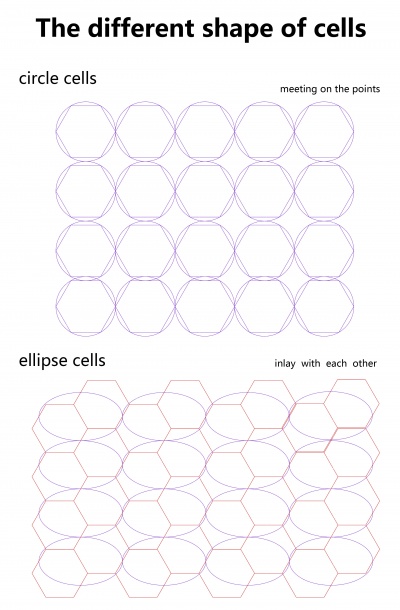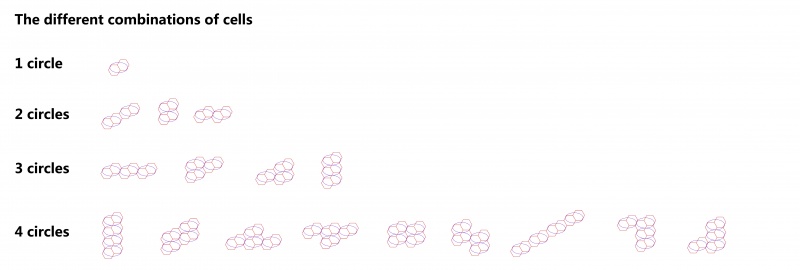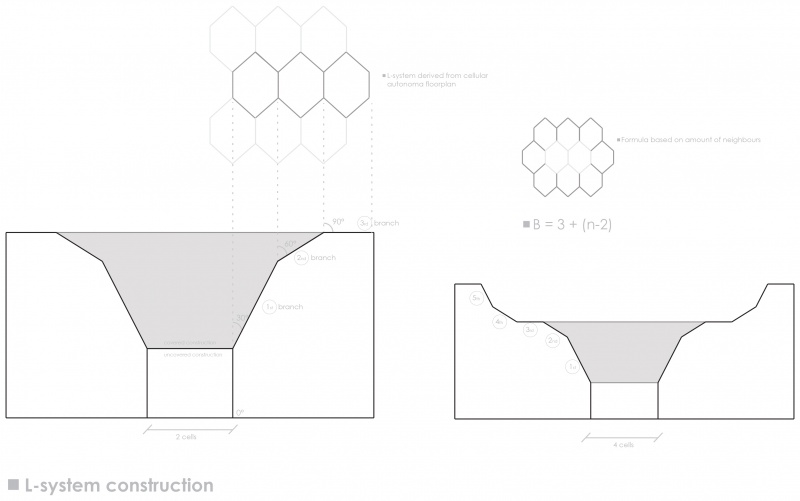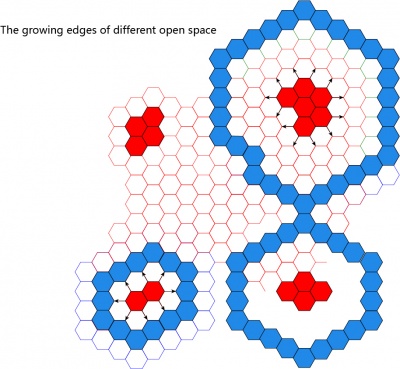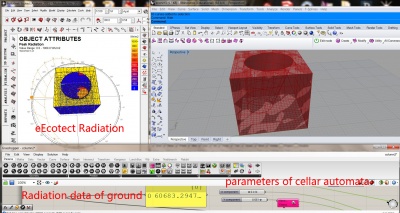workshop01G5:Present to Future
Third Presentation
- Cell shape and configuration
In fist stage the cells are formed by circles. Those circles will create the hexagons, resulting in a grid with gaps. To create a closed grid with inlay between the hexagons, applicable for Cellular Autonoma, the circle-cell will be changed into an elliptical one. This makes one cell exist out of two hexagons.
- Cell configuration for open space
To create a floor plan for the pavilion, Cellular Autonoma is applied in order to let the cells grow creating a hexagonal grid with boundaries and open spaces. The different possible configurations of hexagons allow creating a diversity of open spaces according the amount of cells.
- L-system construction
The construction of the pavilion is based on the growth of an L-system. This L-system is derived from the floor plan which is based on Cellular Autonoma and fits within the hexagonal grid. The construction consists of columns partly covered with a skin. The size of the L-system column -and so the amount of branches- is derived from the amount of neighbors of the cells forming the base of the column. A formula makes the columns surrounding a bigger open space branch more than a column surrounding a smaller open space.
- Logic of L-system branching
(degrees seen from perpendicular of base):
Base branch 0°
1st branch 30°
2nd branch 60°
3rd branch 90°
4th branch 60°
5th branch 30°
6th branch 0°
